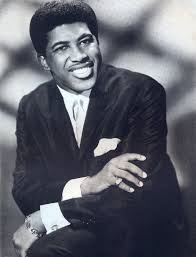Warm Up:
Examine lyrics from the
musical West Side Story. As a class, read the brief introduction to the
musical, then play an audio clip from the song "America" performed by the original Broadway cast in
1957.
Discuss as a class:
1) What examples do the characters offer of differences
between life in rural Puerto Rico and life in urban New York?
____________________________________________________________________________
____________________________________________________________________________
2) How do the lyrics convey a sense of ambiguity, a
complicated feeling of being excited about living in America yet also missing
life in Puerto Rico?
____________________________________________________________________________
____________________________________________________________________________
Guided Practice:
In
addition to Broadway musicals, the Latin influence also appeared in other
styles of American music from the 1950s and early 60s, including Rhythm and
Blues and Pop. Listen to an audio clip of Latin influences in Pop music featuring “Spanish Harlem” by Ben E. King
(1960), “Under the Boardwalk” by the Drifters (1964), and “Come a Little Bit
Closer” by Jay and the Americans (1964).
3) What are the chart positions of these songs, which are
included in the video?
__________________________________________________________________________________________________________________________________________________
4) What do the chart positions signify about the
popularity of these songs during the early 1960s?
__________________________________________________________________________________________________________________________________________________
5) Which elements of these songs seem Latin in nature?
Consider the percussion, the rhythm, the lyrics, and the vocal delivery.
__________________________________________________________________________________________________________________________________________________
The rise of Latin music in popular
culture mirrored a boom in Latino immigration to the U.S. between the 1940s and
1960s. Watch a montage of short clips from Democracy at Work in Rural
Puerto Rico, a film produced in 1940
by the U.S. Department of Agriculture. Pay close attention to how the film
portrays the economy of Puerto Rico and the quality of life on the island.
6) What industry is the Puerto Rican economy based upon?
How does the film portray the nature of this type of work? __________________________________________________________________________________________________________________________________________________________________
7) If you were living in Puerto Rico under these
conditions, what are some reasons you might choose to immigrate to the United
States?
__________________________________________________________________________________________________________________________________________________________________
Display the following graph showing
U.S. immigration statistics and dispersion of Puerto Ricans in the United
States.
8) How does the Puerto Rican population living in the U.S.
change between 1920 and 1950?
____________________________________________________________________________________________________________________________________________________________
9) When does the greatest population change take place?
____________________________________________________________________________________________________________________________________________________________
10) What does this graph tell us about the dispersion of
Puerto Ricans in the U.S.?
__________________________________________________________________________________________________________________________________________________
11) During 1950, what percentage of the total Puerto Rican
population living in the U.S. live specifically in New York City?
__________________________________________________________________________________________________________________________________________________
Check out the following three
photos depicting life in New York City during the 1940s and 50s:
A policeman practicing
Spanish phrases (1958)
and New apartment buildings under construction in Spanish Harlem, where a
large concentration of the Latin Americans resided (1947).
Imagine you’ve just moved
from Puerto Rico to New York City.
12) How do you imagine your life in the U.S. differs from
your life in Puerto Rico? Consider your living situation, language barriers, employment
opportunities, neighborhood, access to education, etc. Cite any details you can
infer from the photographs, when applicable.
__________________________________________________________________________________________________________________________________________________
Check out Handout2: Tito Puente and El Barrio
. Read the
introduction and interview excerpt aloud to the class.
13) What did growing up in Spanish Harlem, or El Barrio
("the neighborhood") provide for Tito Puente in terms of his music
education?
____________________________________________________________________________________________________________________________________________________________
Watch a clip of Tito Puente
performing "Maria Cervantes" in the 1950s, in which he is playing a
vibraphone, a percussion instrument.
14) In your
opinion, what are some elements of this performance that Tito Puente may have
learned while playing music “in the street,” rather than learning formally in
university? __________________________________________________________________________________________________________________________________________________________________
15) This performance aired on television during the 1950s.
Do you think this performance was solely for a Latin-American audience, or
might this music have appealed to a wider audience? Explain your reasoning.
__________________________________________________________________________________________________________________________________________________
Read the following quote
aloud from Charlie Thomas, an African-American New York native who sang in the
R&B group, the Drifters:
"Brought up in Harlem, you’d be around a
lot of Puerto Ricans, so the Latin feel is part of your life...weekends and all
night long, that’s all you’d hear: the sound of Puerto Rican drums going
through your head.”
16) If you were a
musician or music fan living in New York City during the 1940s and 50s, how
might you be influenced by the “Latin feel” that was then prevalent in the
city?
__________________________________________________________________________________________________________________________________________________
Check out the following two
images, an album cover from
Desi Arnaz’s 1947 recording “Babalu” and a 1956 magazine
cover featuring I Love Lucy stars
Lucille Ball and Desi Arnaz. In addition to being a popular Latin musician
during the 1940s and 50s, Arnaz’s character on television, Ricky Ricardo, was
also a Cuban-American bandleader.
I Love Lucy ran from
1951 to 1957 and was the most-watched show on American television for four of
its six seasons.
17) How might the popularity of I Love Lucy have
affected mainstream America’s familiarity with Latin American music during the
1950s?
____________________________________________________________________________________________________________________________________________________________
18) In your opinion, by conveying a marriage between an
American woman and a Cuban man, how might I Love Lucy have advanced
the idea of integration and cultural mixing in 1950s America?
____________________________________________________________________________________________________________________________________________________________
Closure: S. write about one
of the two:
Prompt #1: What examples
of cultural mixing did you take note of during your “trip” around midtown
Manhattan? How did Latin-American music and dance seemingly influence popular
art and culture in 1950s New York City?
Prompt #2: Which rhythms,
genres, artists, or instruments were prevalent in your own musical upbringing?
Was there a particular style of music you heard often at home or in your
neighborhood? Does this exposure influence your choice of music today, and if
so, how?







